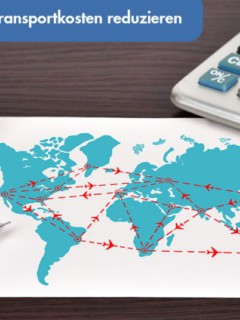The clichés are well known: The French are chaotic but equally romantic, the British are hard-drinkers (or at least hard-drinkers) and have dubious eating habits, and we Germans stand at red lights even at night and love the standard.
So it is certainly no coincidence that the standardisation of a multitude of products and processes, which is indispensable for the economy, originated in Germany of all places – with the founding of the Standards Committee of German Industry in December 1917.
Economic benefits of standards
The establishment of standards and thus agreement on universally valid procedures, measurements, standards and properties is essential for the global economy. Trade and production worldwide is only possible if clear rules apply that are valid beyond national borders.
According to a study by the German Institute for Standardisation (DIN), the overall economic benefit of these standards is estimated at 17 billion euros per year for Germany alone. Companies not only benefit from the “passive” application of standards, they can also actively participate in the creation of new standards. In the development of new technologies, for example, but also in areas such as occupational health and safety or environmental protection, companies can gain a knowledge advantage through their own input in the standardisation process in exchange with expert groups, which can decisively advance their own company.
How does a standard come into being?
But how does a standard actually come into being? DIN stands for Deutsches Institut für Normen (German Institute for Standards) (formerly: Deutsche Industrie Norm) and is a privately organised, non-profit association. It is made up of more than 32,000 experts from industry, research, consumers as well as the federal, state and local governments.
It all starts with an (astonishingly: informal!) application on the DIN website, anyone is entitled to submit an application! Each of these applications is then submitted to external experts for review: Is there interest in developing this standard? What costs are to be expected and is there willingness to finance this project?
Then the project work begins – always supervised by DIN: expert meetings are organised, schedules are drawn up. Now it is also decided whether the standard will be published nationwide, Europe-wide (European Standard: EN) or even worldwide (ISO).
How YOU determine the standard
You can have an influence! Once the expert panel has agreed on a draft standard, it is published on the DIN draft portal and can be commented on by the public for eight weeks. Each point of view received is in turn discussed by the expert panel and, in case of doubt, the standard is improved.
The creation of a standard, shown here in a video:
The first standard DIN 1 – DIN turns 100!
The very first DIN standard, however, initially had less economic than warlike motives. During the First World War, the military ran into difficulties in supplying the German Army: the military could not keep up quickly enough with the production of the MG 08/15, the weapon that every soldier had to learn to handle “in his sleep”. In order to be able to provide the necessary spare parts as quickly as possible, a large number of German companies were commissioned with the production of these weapon parts. It was important to ensure that each of these companies produced the exact, completely identical part that would later function flawlessly in the “08/15”. For this purpose, the military gave the manufacturers precise standards. DIN 1 was born – and for 84 years from 1918 onwards it regulated the exact dimensions of a taper pin that was used in the “08/15”, among other things. Finally, in 1922, probably the best-known standard was adopted. It regulates the exact dimensions of paper, cardboard, posters, etc….
Over 30,000 standards throughout Germany
According to DIN, around 34,100 standards are currently in force, and the number of standards in force worldwide is somewhat vaguely estimated at several hundred thousand. Yet there is even a standard that regulates the term norm! The following entry can be found under DIN EN 45020: “Document that has been drawn up by consensus and adopted by a recognised institution and that lays down rules, guidelines or characteristics for activities or their results (…) for general and recurring use”.
And that is really somehow… typically German!














